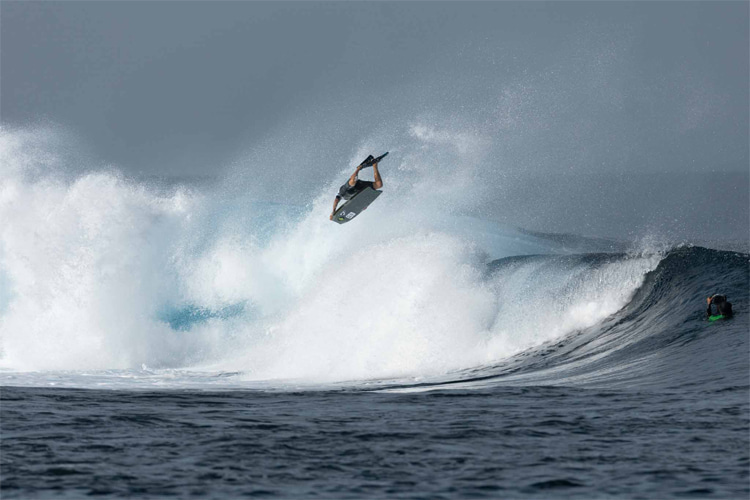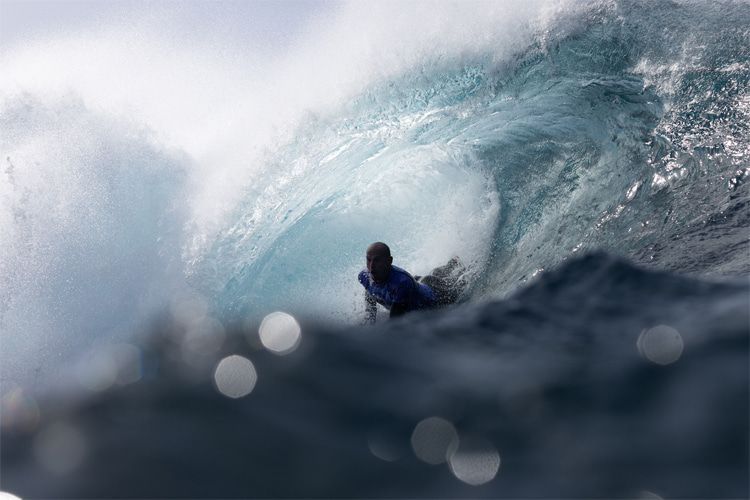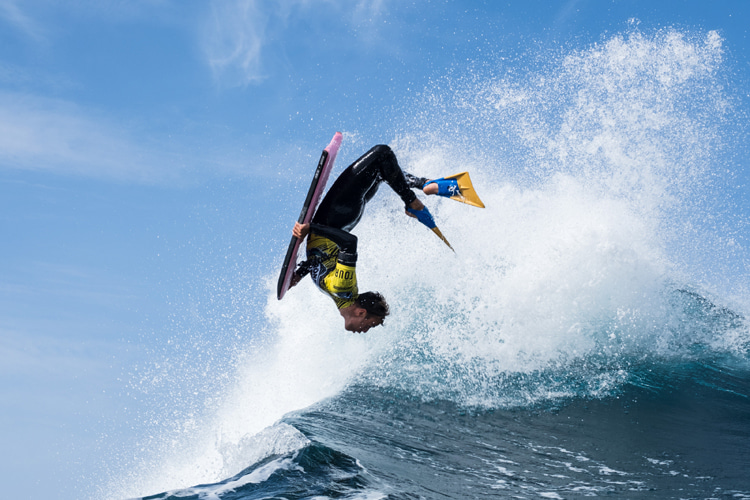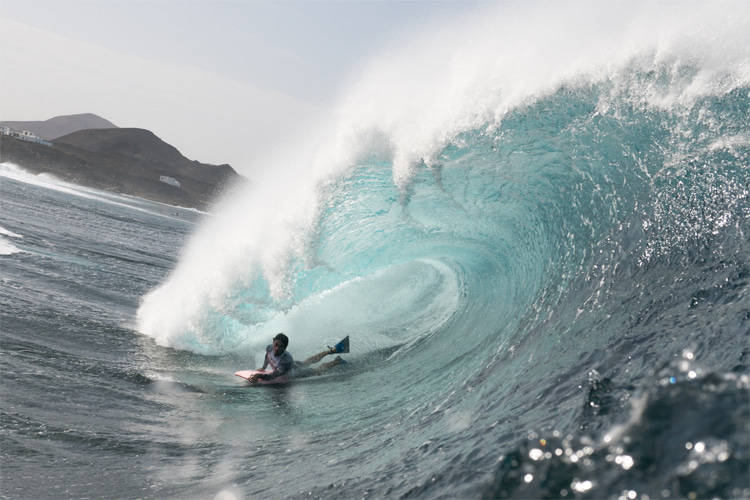Historically, bodyboarding has been the black sheep of the wave-riding family.
Mocked, humiliated, cursed, insulted, teased, and belittled for decades by stand-up surfers, bodyboarders have always had to fight and pull up their socks.
The answer took time, but it was a slap in the face.
As performance bodyboarding reached unprecedented levels of stoke, part of the surfing community willingly threw the towel.
Yes, bodyboarders ride waves that surfers can never dream of.
Yes, bodyboarders take off deeper than any surfer.
Yes, when conditions are chaotic, stormy, and extreme, bodyboarders are the only ones out the back.
The denial era is gone, and those who still spare time arguing about the physical prowess and technical skills required to master bodyboarding at the highest level will easily lose the battle of arguments.

Bodyboard: Light, Portable, Fun, and Affordable
The bodyboard is an amazing wave-riding craft.
It's small, light, super portable, and yet, can propel a rider 15 feet up above the lip, a feat that is virtually impossible in surfing.
A good bodyboard costs a third of a good surfboard.
Then, when it comes to the barrel, bodyboarders drop vertically into a deep cylinder and ride inside the tube longer than any other water sports participants.
Sleds, sponges, lids, boogs, trays, Tupperware, etc. The list of derogatory and pejorative names to refer to bodyboards is endless.
At some point, there was even a marketing stunt by a famous chocolate bar featuring a world surfing champion mocking bodyboarders.
The campaign shocked the bodyboarding community, which protested and boycotted the nougat, peanuts, and caramel with chocolate-coating bar.
This was circa 2010.
Before that, surf magazines of the 1980s and 1990s had already sparked hate toward bodyboarding and bodyboarders, even though, for instance, the first riders to take on big Teahupoo were bodyboarders.
"How could you be respected by riding a wave prone? That's outrageous. Disrespectful."

The Tom Morey Vision
Interestingly, the father of the bodyboard and modern bodyboarding was an accomplished surfer.
Tom Morey, an engineer, philosopher, jazz drummer, surfboard shaper, businessman, and lifeguard, was one of the most skilled surfers of the post-World War II era.
In 1963, he even made the cover of Surfer magazine.
Tom served as President of the United States Surfing Association and even built surfboards made of paper.
Morey was larger than life; probably the most influential figure in wave-riding sports.
In 1971, the Detroit-born genius cut a nine-foot piece of foam in half, shaped it with his wife's iron, and placed a sheet of the Honolulu Advertiser to stop the foam from melting.
Next stop, Honels, the surf break on the west side of Hawaii's Big Island.
The board was fun and easy to ride. The rest is Morey Boogie history.
Tom Morey had just designed the most accessible watercraft. It's cheap, safe, and has a very appealing learning curve.
Soon, Morey Boogie was selling millions of boards and paving the way to a new sport and industry.

Underground But Never Underwater
Despite its popularity, surf media ensured that the new stepbrother would remain in the shadows of a very lucrative surf industry.
"New players? No way. We already have skateboarding under our umbrella, thank you very much."
Bodyboarding has always had to find its own way.
It could've had a neutral, kind of Swiss-like posture from its older brother. But we all know that is not what happened.
Throughout history, there have been attempts to muscle up the niche: magazines have appeared, Big Four sponsors have invested in the sport, and World Tour organizations have run global events.
But the foundations were always precarious and mostly kept afloat by passionate and highly competent individuals who incessantly kept the sport above the water's surface.
You can never tell it's been easy for bodyboarders. It hasn't. It's been a very bumpy road.
Professionalism in bodyboarding is like trying to become a full-time band member or musician in a small country.
Only a few thrived, and even those didn't necessarily become millionaires.
These dark clouds are, here and there, intertwined with glimpses of blue skies.
There are still good bodyboard manufacturers, and some old-school brands are being revived.
Every time a new generation enters the water, the riding level adds a new level of insanity to the previous state-of-the-art.
Skateboarding had its dark decades, too, and now it's an Olympic sport.
Could bodyboarding follow the same path? Maybe. But it needs a helping hand.
The ISA Factor
The International Surfing Association (ISA) is the governing body for the sport of bodyboarding.
From 2012 to 2015, it organized the ISA World Bodyboard Championship.
A similar and older event, the ISA World Surfing Games, awarded gold, silver, and bronze medals and put surfing in the Olympic route.
The ISA World Bodyboard Championship was canceled due to the low interest and participation of the ISA's member federations.
However, the ISA signaled that if the scenario changes and strong and capable hosts show interest, a comeback could be in the making.
Fernando Aguerre, longtime ISA president and the man behind surfing's Olympic debut, is now a well-known personality with solid connections in the Olympiad movement.
If there's someone who could, for a start, get bodyboarding a demonstration sport shot in the Summer Olympics, it is Aguerre.
The International Olympic Committee (IOC) has been focusing on highlighting sports that are accessible and appeal to youth, men and women, boys and girls, all year round.
Bodyboarding ticks all the boxes, and in addition to its virtues, it also allows for a perfect Paralympic showdown.
With millions of recreational participants, it adapts to all ocean conditions and can be enjoyed in all kinds of waves, from point breaks to slabs, beach breaks, and shore breaks.
Having bodyboarding showcased at the Los Angeles 2028 Olympics would certainly honor its California roots, but Brisbane 2032 would also be the perfect celebration of the sport's 60 anniversary.
Which sport can see a 60-year-old GOAT riding massive waves of consequence? Only bodyboarding's very own Mike Stewart.
Need an ambassador? There you have it.
And as Tom Morey once put it, "I don't see any difference between bodyboarding and surfing - it's all surfing."
Words by Luís MP | Founder of SurferToday.com


